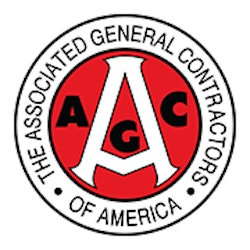
Construction industry employment climbed for the tenth consecutive month in March, as the sector added 18,000 jobs and surpassed 5.8 million employees for the first time since September 2009, according to an analysis of new government data by the Associated General Contractors of America. Association officials cautioned that the industry may soon experience both layoffs for some skilled trades and shortages of others, unless policy makers boost infrastructure investment and allow importation of needed workers.
Construction Employment Emerging from Six-Year Slump
“The nearly steady expansion of construction payrolls since hitting bottom in January 2011 brought the industry’s unemployment rate down to 14.7 percent last month, the lowest March rate since 2008,” said Ken Simonson, the association's chief economist. “Unfortunately, the decline is less a result of the 370,000 construction hires than because more than a million and a half experienced workers have left the industry since its peak by taking other jobs, retiring or leaving the workforce. That makes shortages of skilled workers increasingly likely in high-demand crafts such as pipefitting, welding and some residential activities.”
Construction Jobs See Largest One-Month Gain in 6 Years
The 5.802 million construction workers employed in March constituted an increase of 162,000 or 2.9 percent from a year ago and included many, but not all, nonresidential segments as well as residential construction, Simonson noted. Residential building and specialty trade contractors added 14,800 workers in the month and 77,800 (3.8 percent) over 12 months. Nonresidential building and specialty trade contractors, along with heavy and civil engineering construction firms, boosted employment by 3,000 in March and 84,400 (2.3 percent) since March 2012.
“In contrast to the broad gains in most construction segments, employment in public works construction has been flat or falling,” Simonson pointed out. These counts, which lag the overall industry totals by one month, show a drop of 3,500 employees (1.5 percent) in highway, street and bridge construction from February 2012 to February 2013 and a pickup of only 1,000 (0.7 percent) in water and sewer system construction. At the other extreme, Simonson said, oil and gas pipeline construction employment soared by 16,300 (14.5 percent) and power and communication system construction employment jumped by 14,400 (13 percent).
Association officials said that these diverging employment patterns mean it is essential for the industry to be able to recruit workers from abroad if necessary to fill gaps in critical segments. It is equally important that the public sector stop underinvesting in vital highway and water infrastructure, they said.
“Construction is now adding jobs at a faster clip than the economy as a whole, but there are twin threats to both the industry and overall economic expansion,” said Stephen E. Sandherr, the association’s chief executive officer, “To keep the economy on track, the nation needs up-to-date infrastructure that can deliver energy, goods and people. Policy makers need to do their part by investing in public infrastructure and by allowing construction to import workers when needed.”




























